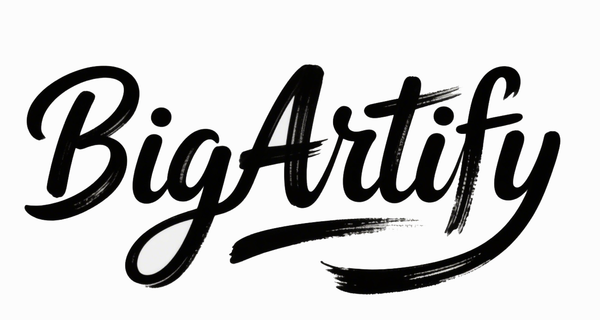Unlocking Creativity: 10 Essential Abstract Painting Techniques for Beginners
Abstract painting offers artists a dynamic platform to express emotions and ideas beyond realistic depiction, blending color, texture, and form into immersive visual narratives. The Milan Art Institute’s guide on abstract painting techniques provides an excellent resource to begin your journey into this expressive art form. Here, we delve deeper into ten foundational techniques that are essential for beginners aiming to create compelling abstract artworks.

1. Acrylic Wash & Ink: Building Layers with Transparency
Diluting acrylic paint to create translucent washes allows you to slowly build depth and complexity. Combining it with acrylic inks lets artists achieve fluidity and delicate overlays. This technique encourages multiple transparent layers, where underpainting peeks through, adding intrigue and movement. For more on layering techniques, see Acrylic Painting Tutorials.
2. Oil Painting Glaze: Adding Luminous Depth
Glazing involves applying thin, transparent layers of oil paint mixed with a medium like Galkin or Venetian Medium over dry paint. This technique enhances color richness and produces glowing, three-dimensional effects by allowing light to pass through and reflect from layers beneath. Explore more on this classic method at Virtual Art Academy - Glazing Techniques.
3. Mark-Making: Expressive Line Work
Using varied line styles—thick, thin, curved, or jagged—infuses paintings with texture and rhythm. Tools like Caran d’Ache crayons or oil sticks offer tactile mark-making possibilities. Mastering mark-making can elevate an abstract piece from flat to visually compelling. Learn expressive drawing techniques on platforms such as Proko.
4. Fake Writing: Abstract Letterforms
Simulating illegible handwriting or calligraphy adds mystery and layered texture. Using water-soluble graphite or inks, artists can seal these marks to enhance visual complexity and narrative. This technique has been popularized in street art and mixed media contexts. Discover collage and writing-inspired layers at Mixed Media Art Tutorials.
5. Patterns: Repetition and Rhythm
Repeating shapes, colors, or lines brings structure and harmony to chaotic compositions. Patterns might be geometric or organic, guiding viewer focus and weaving the artwork’s visual story. Tools like stencils and spray paints are effective for producing clean repeated motifs. Try pattern techniques in abstract art at Milan Art Institute’s Mastery Program.
6. Drip Paint: Embracing Spontaneity
Inspired by pioneers like Jackson Pollock, paint drips and pours add an organic, unpredictable energy. Using diluted paints and spray bottles, artists create fluid, kinetic lines and shapes, promoting chance in the creative process. Tutorials on this approach are available on Abstract Art Techniques – YouTube.
7. Spray-Paint and Splash-Paint: Dynamic Textures
Using spray cans or flicking paint introduces spontaneous textures and bold graphic elements, adding vitality. These techniques encourage experimentation with layering and accidental effects. For innovative textures, explore spray paint projects on Creative Painting Channels.
8. Palette Knife Work: Sculpting Paint
Palette knives enable thick, expressive paint application, creating ridges and distinct shapes. This textural approach invites tactile engagement with the artwork’s surface and supports fast coverage and layering. Legendary artists such as Van Gogh used this technique to great effect. For palette knife tutorials, visit Mont Marte Painting Techniques.
9. Gesture Marks: Conveying Energy
Quick, spontaneous brush or tool strokes capture movement and emotion. Gesture marks infuse paintings with vitality, emphasizing physicality in artmaking. This technique is versatile across media and central to expressive abstraction. Learn about gesture drawing and mark-making at ART at Berlin.
10. Collage: Layering Mixed Media
Adding fabrics, torn papers, sheet music, or personal ephemera provides rich visual layering and depth. Combining collage elements with paint creates complex, narrative-rich surfaces. Molding paste or acrylic mediums secure and seal these materials for durability. Explore mixed-media collage in tutorials at Artists Network.
Additional Texture-Building Techniques
-
Layering: Gradually build up depth by applying multiple paint and material layers.
-
Scraping: Removing paint layers unveils color contrasts and intriguing textures.
-
Impasto: Thick, three-dimensional paint application adds volume.
-
Stencil & Masking: Define clean shapes and patterns within textured compositions.
-
Sgraffito: Scratching through paint layers reveals underlying hues for fine detail.
Why Milan Art Institute?
The Milan Art Institute integrates these techniques into immersive programs designed to help artists at any level transform their creative process. Their Mastery Program provides personalized coaching, professional critiques, and foundational training in composition and technique to sharpen your art skills comprehensively.
Experiencing different painting techniques expands your artistic vocabulary and fuels innovative personal style development. Abstract art’s freedom encourages expression beyond the literal, making it a powerful tool for emotional and conceptual depth.
Frequently Asked Questions (FAQ)
Q1: Can beginners use abstract painting techniques easily?
Yes! Many techniques like acrylic washes, mark-making, and palette knife work offer accessible entry points for beginners.
Q2: How do glazing and layering enhance painting?
They create luminous depth and complex visual relationships, pivotal for nuanced color dynamics.
Q3: What materials are best for abstract painting?
Acrylics, oils, pastels, and mixed media materials like collage elements all offer varied expressive possibilities.
Q4: How important is mastering composition in abstract art?
Composition ensures balance and guides viewer focus, turning abstract elements into cohesive and captivating works.
Q5: Where can I find good abstract painting tutorials?
Websites like Milan Art Institute and YouTube Abstract Workshops provide step-by-step guidance.
Q6: What inspires abstract artists most?
Nature, music, emotions, and spontaneous mark-making often inspire abstract artists to push creative boundaries.
Embracing these ten essential abstract painting techniques equips artists to create works rich in texture, depth, and emotion. Whether you seek to evoke moods, explore forms, or simply enjoy free expression, these methods open pathways to unique and powerful artistic voices.
